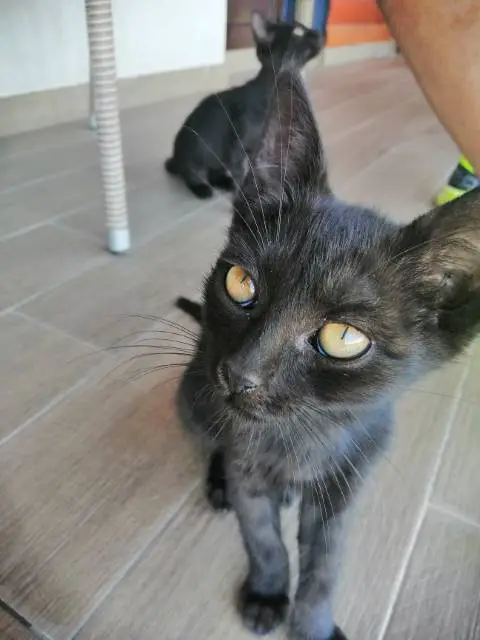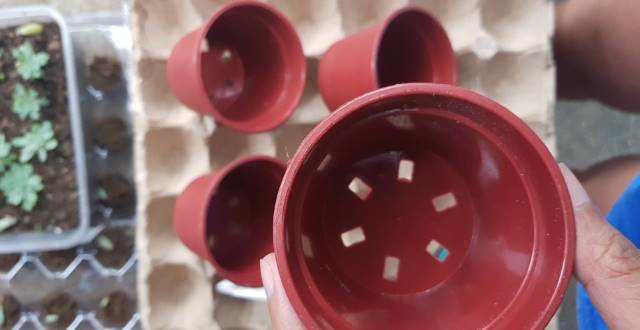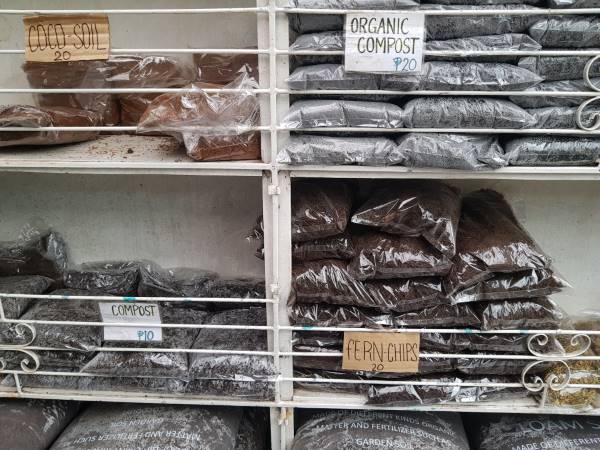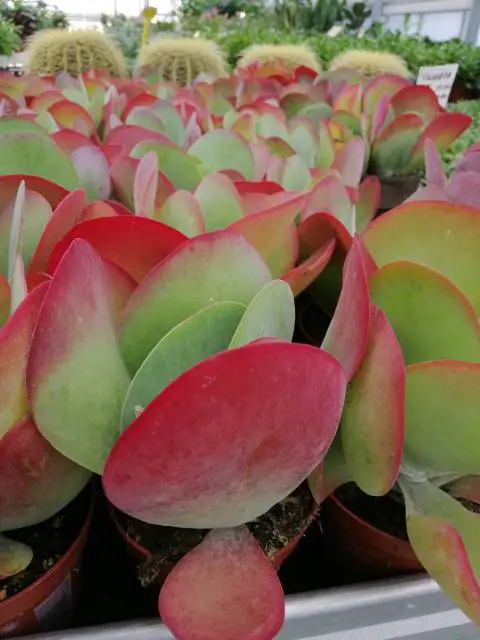Kalanchoe is a genus of more than 125 succulent flowering plants with shiny green leaves and a variety of colorful flowers. These plants require less water and maintenance which makes them the best houseplants. Some of the famous Kalanchoes include Kalanchoe Blossfeldiana, Kalanchoe tomentosa, Mother of thousands, and many more.

Are you keeping pets or birds at home? If want to have a few Kalanchoes at your home, you might need to check the list of plants that are safer for your pets. Kalanchoes can be potentially toxic to household pets. These plants may not be a good option for those people who love to keep pets and birds at home unless they keep the plants out of their reach.
Are Kalanchoes toxic to Humans?
The answer is No!
Kalanchoes are luckily safe to humans. Not even a single species of Kalanchoe is listed as toxic to humans at any source. Kalanchoes secure their position in the list of nonpoisonous plants with a notation that “the evergreen perennial succulent has no known toxicity to humans”.
However, these plants have medical benefits and used for the cure of some human diseases. Kalanchoe pinnata contains potentially active substances that are safe for the oral treatment of human disease “Leishmaniasis” (a skin disease causing skin ulcers) with no adverse reactions or toxic effects at all.
Which animals find Kalanchoes toxic?
Kalanchoes can be problematic for several animals. They are toxic to dogs, cats, birds, and livestock as well. Even a little part of the plant is enough to harm your pet or other animals leading to serious health emergency.
What makes Kalanchoes toxic to animals?
This question might be on your mind that what makes the Kalanchoes poisonous? These plants contain cardiac glycosides or cardiotoxins (a class of compounds that disturbs the normal heart functioning) that are poisonous to animals. The toxicity is primarily due to a group of “bufadienolide compounds” including a range of cardiac glycosides.
The bufadienolide inhibits the sodium-potassium pump of the heart cell membrane resulting in disorganized cardiac electrical activity, arrhythmias, and eventually cardiac arrest.
Which Kalanchoe species are toxic to animals?
Are there any Kalanchoe species that are safe for animals? The answer is “NO”. All species of genus Kalanchoe are potentially poisonous to cats, dogs, livestock and birds.
Which plant parts are more toxic?
All parts of the plants are toxic to animals. The blossoms generally contain a much higher amount of toxins than stems or leaves. Toxicity most commonly appears during the summer season when the plants are in the active blooming phase. Animals feeding on flowers will be prune to toxicity immediately.
Kalanchoe Toxicity to Cats and Dogs
Although Kalanchoe is a beautiful flowering houseplant, you must protect your dogs and cats from poisoning. Household pets are at a greater risk of Kalanchoe toxicity as these plants are found in home gardens as common houseplants. Dogs are reported to be more sensitive to the toxicity caused by Kalanchoes. It is always advisable to keep the plants at a spot that is inaccessible to your pets.
Lethal dose
The lethal or harmful dose for cats and dogs is not yet determined. However, the intensity of toxicity depends upon the type of plant and the quantity of the plant part ingested by the pets.
Symptoms
According to the reports of ASPCA (American Society for the Prevention of Cruelty to Animals), the pets may start to feel the symptoms of poisoning within a few hours of ingestion.
The intensity of symptoms directly depends upon the amount of plant mass eaten by the animals. What are the symptoms of toxicity? If a pet eats a part of Kalanchoe plant, it might start excessive slobbering with signs of gastrointestinal irritation (diarrhea and abdominal pain) and restlessness.
In case your pet eats Kalanchoes in a significant amount there will be a high risk of developing serious symptoms. In severe cases, the animal will feel cardiac effects, such as changes in the heart rate, rhythm (arrhythmias), weakness, extreme coldness, dyspnea, anorexia, and tachycardia.
The heart can eventually be arrested killing the pets. Dogs have been reported to show a few other symptoms like loss of appetite, nausea, dilated pupils, lethargy, tremors, seizure, and unsteady gait.
However, APSCA states that cardiac effects are very rare in the case of cats and dogs, vomiting, and stomach irritation are the most common symptoms. The symptoms of toxicity might last for a course of 12 hours to a maximum of 4 or 5 days.
Toxicity to livestock
Kalanchoes are highly toxic to livestock. Grazing animals in such fields or pastures where Kalanchoes are growing along with the forage can lead to serious health concerns. The death of the animals is generally due to glycosides that affect heart functioning. In different parts of the world such as Australia and South Africa where kalanchoes grow abundantly, livestock poisoning is often reported.
Relatively fewer cases of livestock toxicity are reported in the US. Cattle poisoning appeared as an outbreak in Northeastern Brazil due to Kalanchoe blossfeldiana (Florist Kalanchoe). The animals grazing in the pastures usually starts ingesting Kalanchoe plants due to scarcity of forage and fall prey to poisoning. Kalanchoes are preferably grown in gardens or containers rather than pastures or fields to avoid livestock toxicity.
Lethal dose
The flowers of Kalanchoe contain a higher concentration of glycosides than any other plant part. The kalanchoes can be fatal to livestock even at a very low quantity. The calves generally die after eating 7 g of blossoms per kg of body mass or 40 g leaves per kg of body mass. Most of the livestock toxicity cases are reported when the livestock feeds on the plants during full bloom phase.
Symptoms
Livestock may develop several clinical symptoms such as depression, upset, anorexia, excessive salivation, and diarrhea. The most common symptom in livestock is diarrhea that may be bloody. Neuromuscular disorders have been frequently reported in livestock due to Kalanchoe toxicity. The cardiac effects include arrhythmias, heart blockage, bradycardia, which ultimately result in weakness, collapse, and death of the animals.
Toxicity to birds
Kalanchoes are among those plants that are potentially toxic to birds. Several species of Kalanchoes showed toxicity symptoms in birds. These plants affect the cardiovascular and nervous systems of the birds.
Lethal dose
The toxic or lethal dose of Kalanchoe to birds is 8 to 12 mg per kg of body mass. If the birds ingest the plants at a lethal dose, they will start developing the symptoms of toxicity soon.
Symptoms
Kalanchoe induces clinical signs of depression, ataxia, tremors, seizures, paralysis, collapse, and death in birds. Cardiac effects of Kalanchoe may include bradycardia, arrhythmias, and death.
How to respond to the poisoning threat?
Kalanchoe poisoning can be fatal if not treated right away. What you should do in case your animal ingests a part of Kalanchoe? If you see that your pet or animal has ingested Kalanchoe plant parts, immediately take your animal away from that area. Don’t wait for the symptoms to appear. Seek advice from the Veterinarian as soon as possible.
What you should do if your animal shows toxicity symptoms? Don’t try to induce vomiting at your own unless advised by the Vet. The use of hydrogen peroxide to induce vomiting will not help your animal as it will cause more drooling and mouth foaming. Don’t wait for magic or a miracle to happen and not even try to cure your pet at home. If you observe poisoning symptoms take your animal to the Vet immediately.
The Vet might require you to provide him a few details such as which plant and how much quantity of the plant your pet or animal has ingested and how long ago it happened? The Vet will also ask what type of symptoms the animal is experiencing. You may also have to tell the Vet if your animal has a previous medical history. The Vet will conduct a complete physical examination of the animal including the assessment of blood pressure, body temperature, breathing, heart rate, physical appearance, weight, reflexes, and also examine the condition of eyes, ears, nose, and mouth. In case of any internal damage, the Vet might also conduct some necessary laboratory or biochemical tests.
What you should do if you can’t visit the Vet? If you can’t go to the Vet, at least call for expert advice on whether to induce vomiting or any other necessary steps that must be taken to save the animal’s life. A Vet can provide better assistance to cure your pet.
Care and Treatment
If you observe the symptoms of poisoning don’t panic, you can still help your pet to alleviate the stress. Try to keep your pet calm and quiet as much as you can to avoid the stress on the heart. Even if your pet does not show any symptoms of poisoning the Vet will still induce vomiting to clean the toxins from stomach. After vomiting, the pet may be put on intravenous fluids or given activated charcoal to maintain the normal heart rate. Activated charcoal is used to absorb the toxins from the body of animal as much as possible. Gastric lavage may also be done with saline solution to clear any toxic remnants from the stomach.
Some Useful tips to avoid Kalanchoe contact with the pets
If you are having pets at your home but you also want to keep a few kalanchoes in your garden, you need to do a little adjustment.
Here I’ll share a few useful tips on how you can avoid contact of poisonous Kalanchoes with your pets.
- Keep your plants at such places that are out of the reach of your pets.
- You can keep your plants on high shelves or tables.
- You can also use some repellent sprays to keep the pets away.
- In case you don’t want to spray your plants, try placing some orange and lemon peels in the container as their strong smell can also help to keep them away. The pets don’t like the smell of orange and lemon peels at all.





